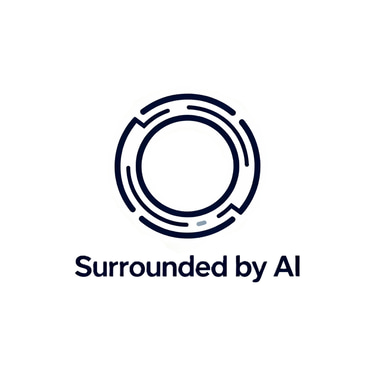The Artificial Intelligence Bubble
Why It Will Expand and Why It May Burst
NEWSFUTURE
10/31/20253 min read


Artificial Intelligence is driving some of the most transformative changes across industries, rapidly growing into a multi-trillion-dollar global market. However, questions linger about whether current exuberance signals a sustainable revolution or a speculative bubble poised to burst. Let's explore the data-backed reasons on both sides of this massive technological wave.
Why the AI Bubble Will Continue to Expand
1. Explosive Market Growth and Investment
The global AI market size is estimated at $638 billion in 2025 and projected to soar to nearly $3.7 trillion by 2034, expanding at a compound annual growth rate (CAGR) of 19.2%. In 2025 alone, AI startup funding hit $73.1 billion globally in Q1, representing nearly 58% of all venture capital investments, indicating unprecedented investor enthusiasm. Massive mega-rounds continue, including companies like OpenAI raising tens of billions and other key players drawing billion-dollar rounds.finance.yahoo+3
2. Broad Industry Adoption
AI adoption is accelerating in multiple sectors. Healthcare leads with a CAGR of around 37%, leveraging AI for diagnostics, patient management, and drug discovery, improving outcomes and efficiency. Manufacturing uses AI for predictive maintenance and supply chain optimization, reducing costly downtime by an average 23%. Even retail saw a 15% increase in conversion over Black Friday 2024 through AI chatbots. IT and telecommunications boast an 83% AI adoption rate, the highest among industries.netguru+1
3. Driving Economic Growth and Productivity
AI is a key driver of economic growth worldwide and especially in the U.S., where experts credit AI-led investments with boosting GDP growth even amid government shutdowns and economic headwinds. AI-powered automation is estimated to increase U.S. labor productivity by up to 35% by 2035, saving trillions of dollars. The technology is revolutionizing workflows, from real-time fraud detection in finance to personalized customer service.bloomberg+2
4. Infrastructure Buildout and Technology Advancements
Global AI infrastructure spending could reach $3 to $4 trillion by 2030 as industry giants like Microsoft, Amazon, and Meta continue massive investments. The rise of specialized hardware like GPUs and AI inference chips enables faster, cheaper model training. However, these advances require enormous capital, driving investor interest but also raising barriers for smaller players.reuters+1
5. Strong Government Support
Governments worldwide are deploying AI-friendly policies, including executive orders to accelerate AI development and ease regulations perceived as innovation bottlenecks. For example, a U.S. executive order in 2025 prioritizes AI leadership and cuts restrictions on infrastructure projects to foster growth.news.harvard+1
Why the AI Bubble May Burst
1. Inflated Valuations and Speculative Investment
A significant share of AI startups are valued highly despite generating minimal revenue. Some companies boast valuations of hundreds of millions or even billions per employee, a red flag for inflated expectations. Early-stage AI venture capital appears overheated, showing classic bubble signs similar to the late 1990s dot-com period.reuters+1
2. Skyrocketing Operational and Training Costs
Training leading-edge AI models costs tens to hundreds of millions of dollars. For example, OpenAI’s Gemini model training costs could range between $30 million to $191 million, with total expenses for advanced models easily exceeding $100 million. High energy consumption and infrastructure costs disproportionately favor big players, squeezing smaller startups and impeding scalability.linkedin+1
3. Regulatory and Ethical Challenges
While some countries promote AI development, increasing global regulatory scrutiny may dampen growth. Issues around data privacy, the ethical use of AI, accountability, and copyright lawsuits are mounting. These create compliance costs and legal uncertainties that can stifle innovation or invite backlash.anecdotes+1
4. Public Distrust and Fatigue
Consumers face misinformation, deepfakes, biased AI systems, and privacy concerns. User trust is eroding, and there's rising skepticism regarding AI's societal impact. Growing calls for tighter controls and transparency might limit how aggressively companies can monetize AI technologies.fortune
5. Hype Beyond Practical Impact
Not all AI applications deliver significant improvements or profits. Many companies are accused of “AI-washing,” using the label more for marketing than substance. As businesses and investors become more discerning, weaker players may fail to sustain funding or market interest, leading to a shakeout.marketwatch+1
A Likely Scenario: Growth with Corrections
The data suggest the AI sector is in a period of explosive growth buoyed by technology leaps, government backing, and broad adoption. However, signs of speculative excess, cost pressures, and regulatory risks mean the industry will likely experience a correction similar to the internet bubble of the early 2000s. This correction will weed out unsustainable ventures while leaving robust technological innovation intact.
